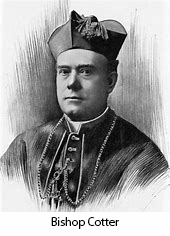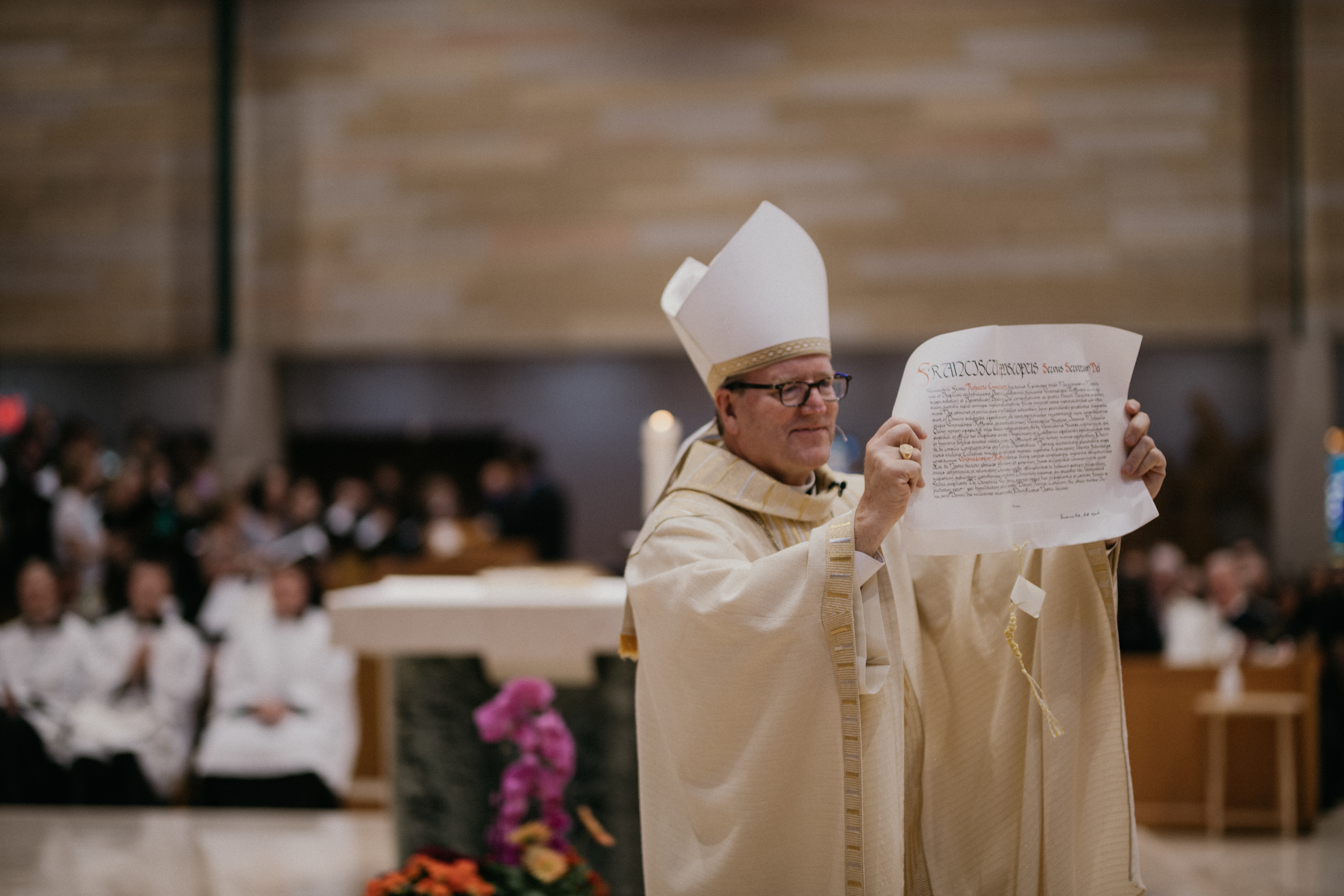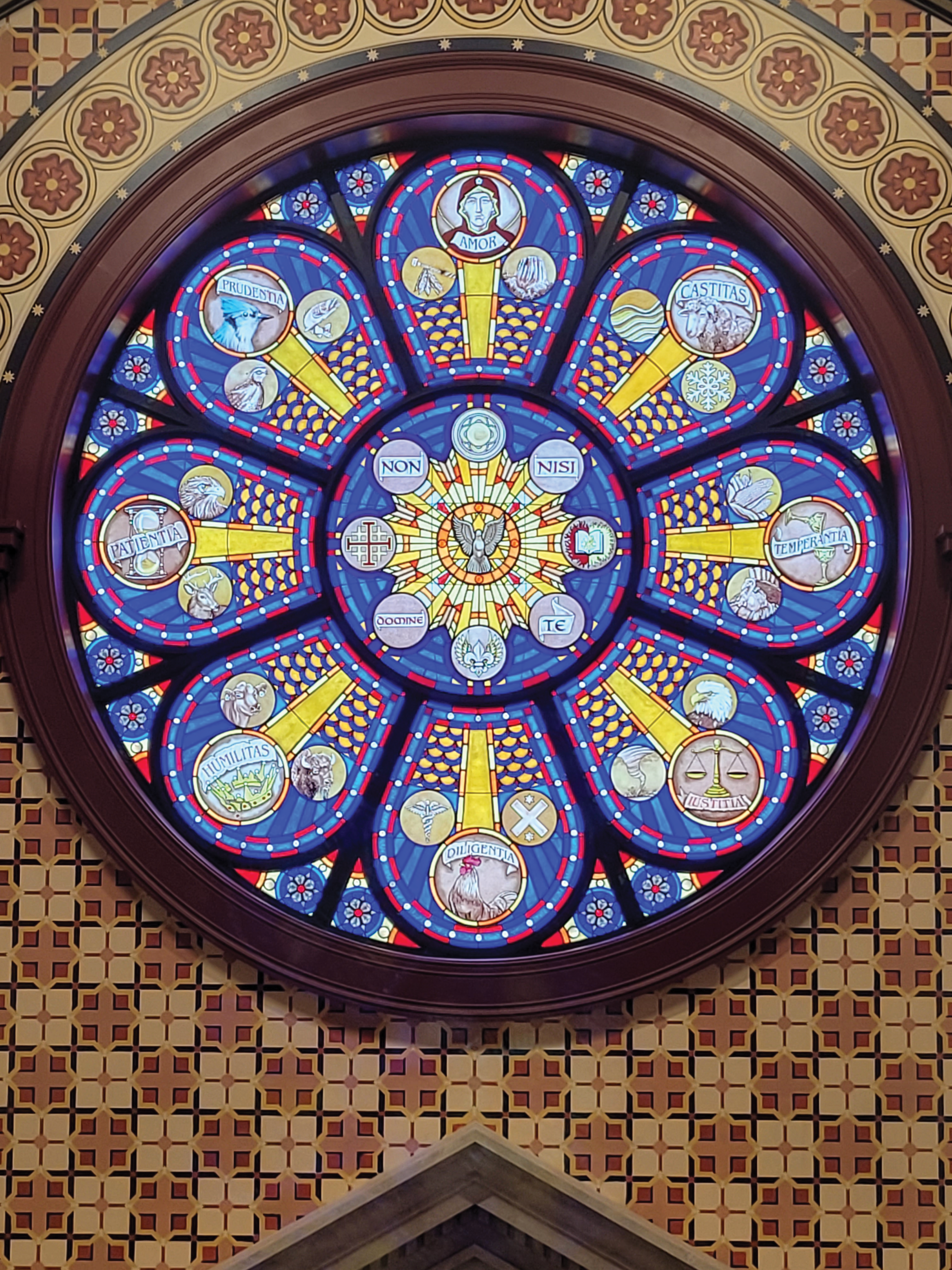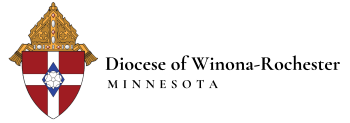- Home
- About
- Bishop Barron
- Offices
- Catholic Cemeteries
- Catholic Charities
- Catholic Foundation
- Catholic Schools
- Chancellor and Archives
- Communications
- Diaconate
- Divine Worship
- Finance
- Hispanic Ministries
- Human Resources
- Lay Formation and RCIA
- Life, Marriage & Family
- Missionary Discipleship
- Pastoral Planning
- Religious Immigration
- Safe Environment
- Social Justice
- SPOF
- The Courier
- Tribunal
- Vicar General
- Vocations
- Young Adult Ministry
- Youth Ministry and Faith Formation
- Directories
Diocese of Winona-Rochester History

In 1680, the first Catholic missionary, a Jesuit, arrived in southern Minnesota to minister to the original people of the area and the new European settlers. Early priest-missionaries spoke their native European language and Latin but also learned English and Lakota to invite local residents into the faith. Father Ravoux was the one who published the first catechism in the language of the first people of Minnesota, Dakota (Sioux), entitled, Wikantanka Ti ki Chanku (The Path to the House of God). He led the Sioux people regularly in Catholic devotional prayer in their language.
The Minnesota territory had became part of the Diocese of St. Louis, MO in 1826, but later (1837) the Pope rearranged the territory so that southern Minnesota became part of the Diocese of Dubuque, IA. The Bishop of Dubuque, Mathias Loras, sent Father Lucien Galtier to Minnesota where he offered the first Mass recorded for the Diocese of Winona along the running waters of the Mississippi in Wabasha, MN.
Missionary priests worked with Catholic settlers from Ireland, Germany, the Czech region, and Poland. Historians recorded a large influx of immigrants in the area between the time the region was a territory of the USA (1849) until statehood (1858). In nine short years, settlements and churches sprang up along the Mississippi and Minnesota Rivers.
In the meantime, Rome formed the Diocese of St. Paul. In July of 1850, Father Joseph Cretin became the first bishop of St. Paul, MN. Population was growing throughout the diocesan territories, which included the areas of present day Minnesota, North Dakota, South Dakota, a portion of Wisconsin, and stretching into the Western territories up to the eastern foothills of the Rocky Mountains.
German Catholics moved in from St. Charles, MO, arriving along the fertile land bordering the Minnesota River Valley. At the bend of the river, they established a new village with a Dakota name - Mankato - meaning blue-colored clay of the riverbed. The people founded the second parish in the diocese -- Saints Peter and Paul -- with Father Valentine Sommereisen as the first resident priest in the diocese. Father Sommereisen arrived in Mankato in 1856 and by 1865, he and the bishop called for the help of the School Sisters of Notre Dame of Milwaukee to meet the educational needs of the growing river city. The Notre Dame Sisters opened the first parochial school in southern Minnesota.
In 1877, coadjutor Bishop John Ireland of St. Paul contracted with railroad baron, James J. Hill, for over 100,000 acres of land in southwestern Minnesota. Through newspapers and fliers, he recruited poor Irish and German farmers to settle the rich land. He assembled a committee in St. Paul to distribute the land. This committee drew up contracts with no down payment, interest paid the second year, and payment on the land required in the third year. The coadjutor’s loftier goal was to settle the pristine land with Catholics.
By 1888, the Pope named the diocese a province and appointed its coadjutor bishop, John Ireland, Archbishop of the new Archdiocese of St. Paul, MN. Minnesota now had smaller dioceses, one of which was the Diocese of Winona.
Father Joseph B. Cotter, a friend of Archbishop John Ireland, and pastor of the Church of St. Thomas in the city of Winona, was appointed the first bishop of the new Diocese of Winona. He was ordained a bishop on December 27, 1889 in the Cathedral at St. Paul. Ten days later he was installed in the pro-cathedral of St. Thomas, Winona, MN.

The Sisters of Saint Francis of the Congregation of our Lady of Lourdes heeded the call to the Diocese of Winona. Mother Alfred Moes moved the Franciscan sisters from Owatonna to Rochester and after the deadly twister in 1882, Mother Alfred called for a hospital in Rochester and offered to build and staff it. She enlisted physicians William and Charles Mayo to take charge of the diagnostic and surgical needs. The Doctors Mayo and the Sisters of St. Francis opened the doors of the famous Mayo Clinic on September 30, 1889. The sisters also opened the Winona Seminary for Ladies in 1894, which eventually became the College of St Teresa (closed almost 100 years later).
The Brothers of Christian Schools were invited to open the diocese's first high school, Cotter High School, in Winona, named after Bishop Heffron's predecessor, Bishop Cotter, the first bishop of the diocese. The school was dedicated on Thanksgiving Day in 1911 and two years later, September of 1913, Bishop Heffron established St Mary's College (now Saint Mary's University). In 1933 the Christian Brothers took charge of the administration and staffing of the college.
Between 1933 and 1948, Saint Mary's College provided training for future priests, brothers, and laymen. In 1948, Bishop Leo Binz engaged the people of the diocese to build Immaculate Heart of Mary Seminary on the campus of St. Mary's College. The seminary was completed in 1951. Catholic leaders molded the foundation of Catholic education and formation for generations to come.
In the first days of Bishop Cotter's term (1889), there were 45 diocesan priests, 4 religious, 109 parishes/missions, and 19 parish schools. By 1909 when Bishop Cotter died, there were 85 diocesan priests and 7 religious, 124 parishes/missions and 28 parish schools.
Today, there are 99 parishes/missions, 106 priests, 154 sisters, 14 brothers, 2 consecrated virgins, 35 deacons, and over 136,000 Catholics. There are 23 Catholic Schools and a Catholic university for women and men, St. Mary’s University. The Diocese of Winona-Rochester covers 13,000 square miles of the southern 20 counties of Minnesota.
The Cathedral of the Sacred Heart in Winona (built 1952; renovated 2008) is the home parish of the diocesan bishop and houses the bishop's chair, called the "cathedra." Bishop Bernard Harrington was installed in the "cathedra" as the seventh Bishop of the Diocese of Winona on January 6, 1999.
On October 15, 2008 Bishop John M. Quinn was appointed as Coadjutor Bishop of Winona. His Mass of Welcome took place December 11, 2008 at the Cathedral of the Sacred Heart. Pope Benedict XVI accepted the resignation of Bishop Harrington on May 7, 2009. Bishop Quinn was installed as Eighth Bishop of the Diocese of Winona that same day.
On 23 January 2018, by virtue of a decree from the Congregation for Bishops, the diocese was renamed the Diocese of Winona-Rochester, and the parish of St. John the Evangelist in Rochester, Minnesota, was raised to the dignity of a co-cathedral.
 On Thursday, June 2, 2022, the Holy See announced that Pope Francis had appointed the Most Rev. Robert E. Barron, Auxiliary Bishop of the Archdiocese of Los Angeles, as the ninth bishop of the Diocese of Winona-Rochester.
On Thursday, June 2, 2022, the Holy See announced that Pope Francis had appointed the Most Rev. Robert E. Barron, Auxiliary Bishop of the Archdiocese of Los Angeles, as the ninth bishop of the Diocese of Winona-Rochester.
Bishop Robert Barron was installed as the ninth bishop of the Diocese of Winona-Rochester on July 29, 2022, at the Co-Cathedral of St. John the Evangelist in Rochester, MN.
On November 3, 2022, Bishop Barron announced at a special press conference that the Diocese of Winona-Rochester would be moving to a new building in Rochester, MN. In June 2024, the offices of the Clare LoCoco, Word on Fire Catholic Ministries Diocese officially moved to the new location on Jeremiah Lane in  Rochester from their previous location in Winona, MN. Bishop Robert Barron is very grateful to the people who financially supported the building of the new Chancery in Rochester. He views this as a culmination of efforts to make the Church more accessible to the diocese's population. Bishop Barron noted, “The Chancery's location will allow the Church to better serve parishioners, clergy, and parish staff of all communities within the Diocese of Winona-Rochester. This building will not only house the diocesan offices, but will be a beacon of beauty for all in the diocese.”
Rochester from their previous location in Winona, MN. Bishop Robert Barron is very grateful to the people who financially supported the building of the new Chancery in Rochester. He views this as a culmination of efforts to make the Church more accessible to the diocese's population. Bishop Barron noted, “The Chancery's location will allow the Church to better serve parishioners, clergy, and parish staff of all communities within the Diocese of Winona-Rochester. This building will not only house the diocesan offices, but will be a beacon of beauty for all in the diocese.”
Nick Reller, Diocese of Winona-Rochester
Updated on October 15, 2024

